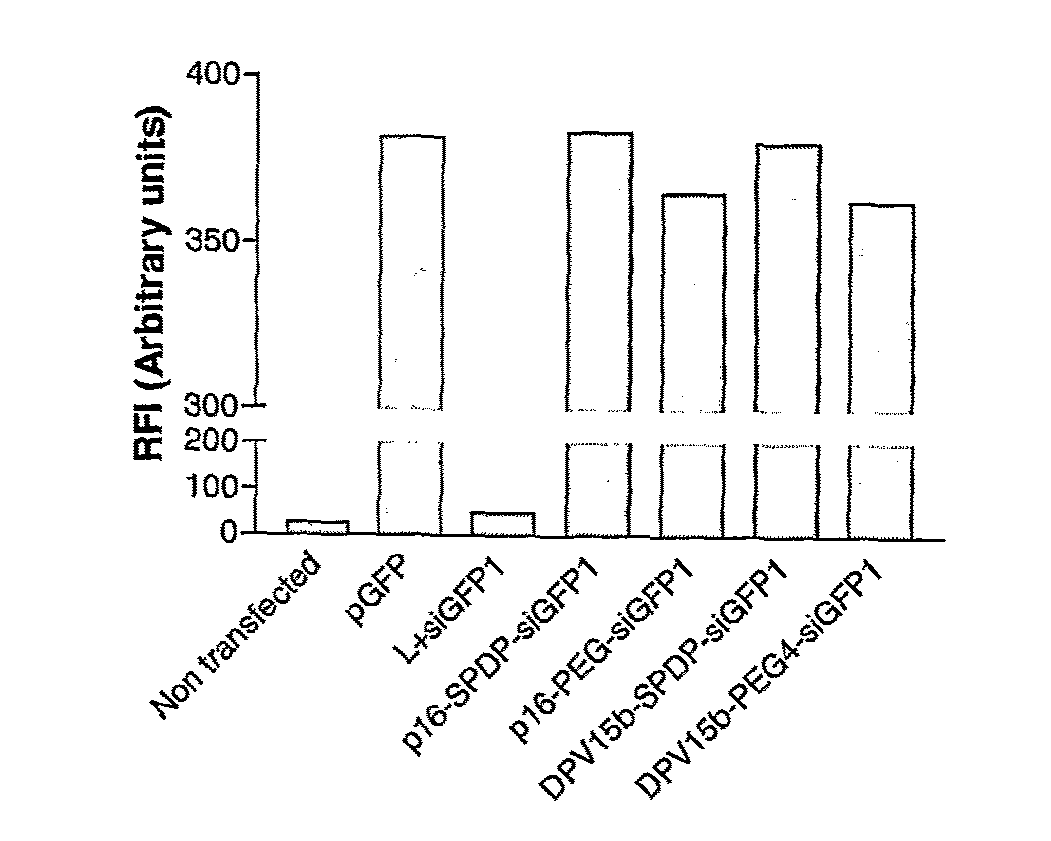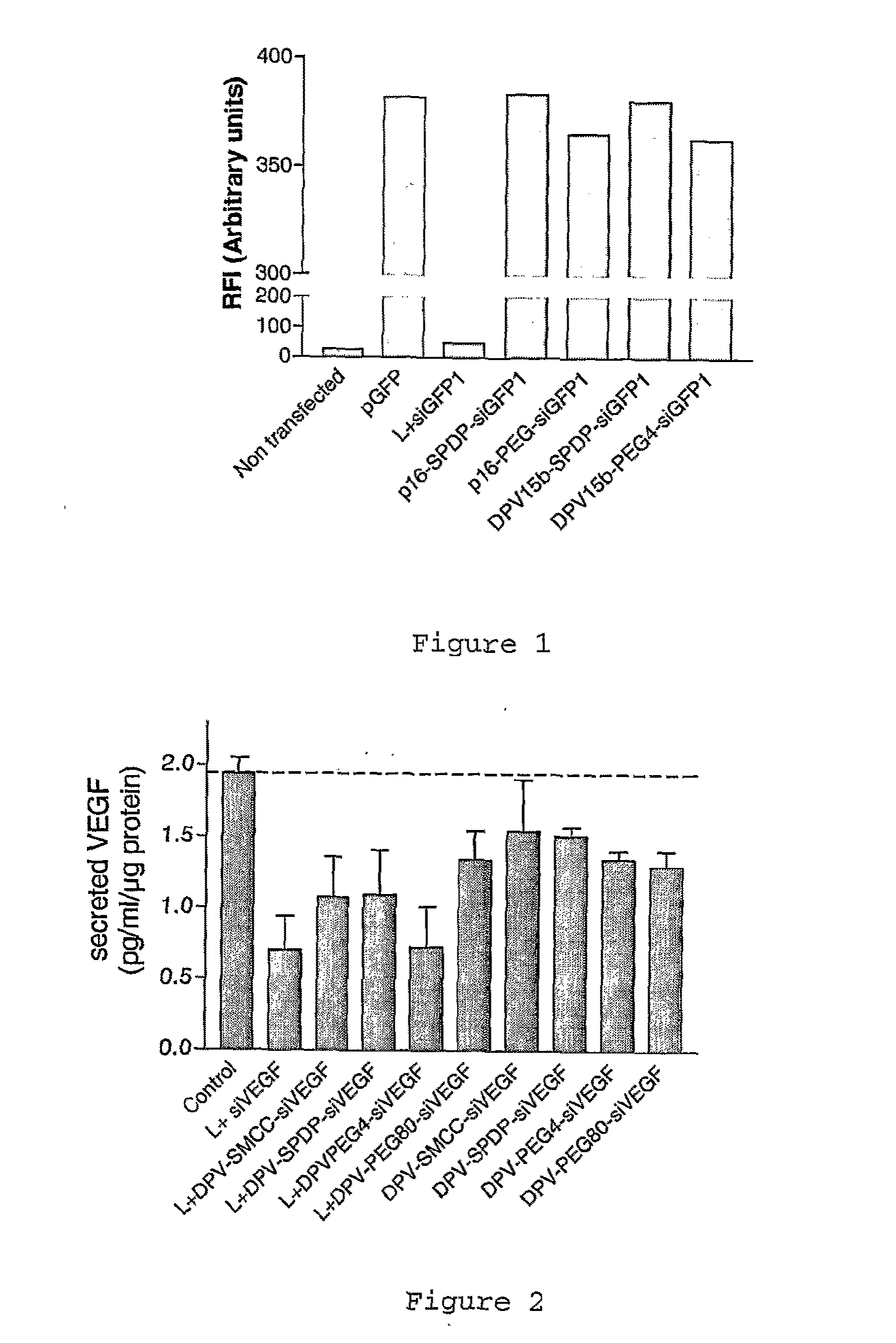Cell Penetrating Peptide Conjugates for Delivering of Nucleic Acids into a Cell
a cell-penetration and nucleic acid technology, applied in the direction of bactericidal/permeability-increasing protein, immunological disorders, metabolism disorders, etc., can solve the problems of affecting the efficiency of delivery, and affecting the strategy
- Summary
- Abstract
- Description
- Claims
- Application Information
AI Technical Summary
Benefits of technology
Problems solved by technology
Method used
Image
Examples
examples
[0244]Other advantages and characteristics of the invention will appear from the following examples which refer to the above figures. The examples are given to illustrate the invention but not to limit the scope of the claims.
I—Conjugation Protocol
[0245]I-1 Method for the Preparation of a Conjugate Represented by the Structure of the General Formula P-L-N, wherein P is a Cell Penetrating Peptide, N is a siRNA, and L is a Polyethylene Glycol (PEG)-Based Linker Linking P and N Together: Single Strand Approach
1) dissolve the 5′ amino C3 sense siRNA strand (i.e. NH2—(CH2)3-phosphate moiety anchored on the free 5′ moiety of the sense strand) in sterile water (2 mM),
2) dilute the 5′ amino C3 sense strand with phosphate buffer pH 8.2 (50 mM NaH2PO4 / Na2HPO4 50 mM, NaCl 0.15M) to a final siRNA concentration of 2 mg·mL−1,
3) after addition of 400 eq. of PEG-based linker (solubilized 10 mg·mL−1 in N,N-dimethylformamide) incubate the reaction mixture 90 min. at room temperature (about 20° C.),
4)...
PUM
| Property | Measurement | Unit |
|---|---|---|
| Fraction | aaaaa | aaaaa |
| Fraction | aaaaa | aaaaa |
| Length | aaaaa | aaaaa |
Abstract
Description
Claims
Application Information
 Login to View More
Login to View More - R&D
- Intellectual Property
- Life Sciences
- Materials
- Tech Scout
- Unparalleled Data Quality
- Higher Quality Content
- 60% Fewer Hallucinations
Browse by: Latest US Patents, China's latest patents, Technical Efficacy Thesaurus, Application Domain, Technology Topic, Popular Technical Reports.
© 2025 PatSnap. All rights reserved.Legal|Privacy policy|Modern Slavery Act Transparency Statement|Sitemap|About US| Contact US: help@patsnap.com



